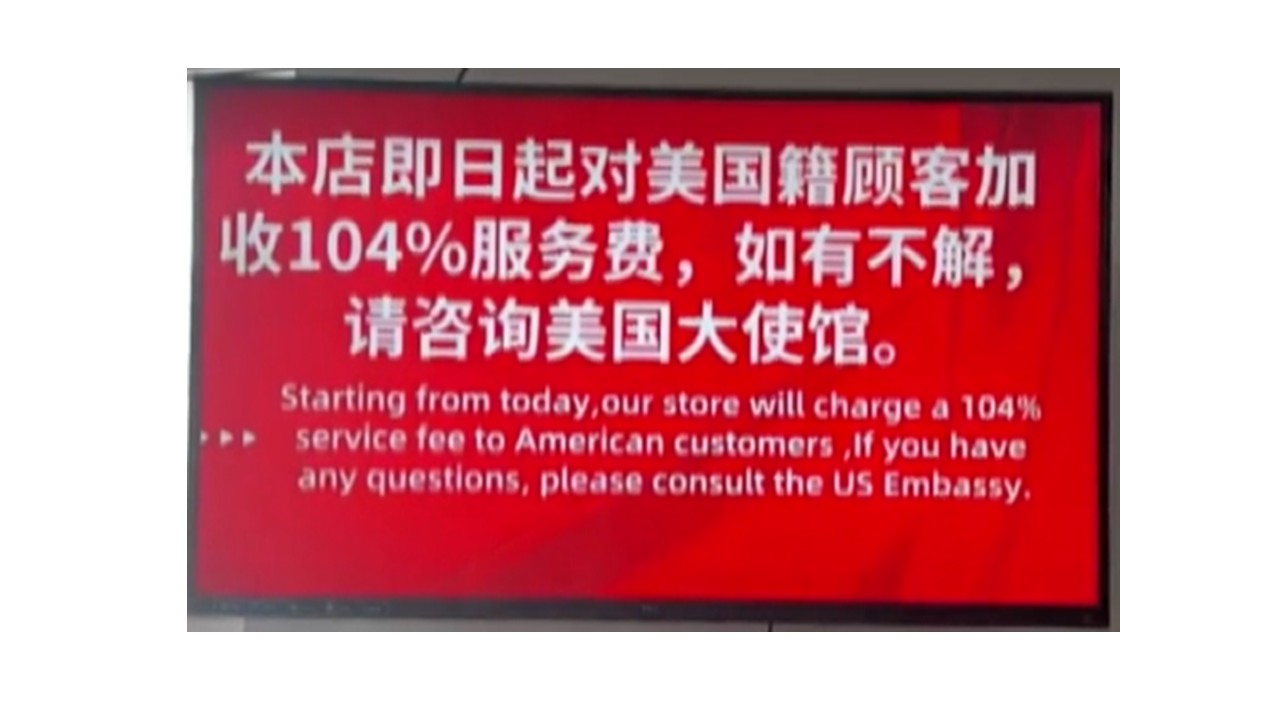The United States is in a trade war. America’s trade deficit has ballooned to such a scale that it is no longer sustainable. In 2024, the U.S. imports of goods and services deficit exceeded exports by $918 billion, draining wealth from the economy and increasing its reliance on foreign goods and capital. Something must be done to reverse this trend.
Part of the problem lies in the practices of key trading partners, particularly China. For decades, China has benefited from access to U.S. markets while often ignoring principles of fair trade. This includes subsidies to state-owned enterprises, forced technology transfers, intellectual property theft, and other forms of economic manipulation. In this context, a tariff war—though painful—might be seen as a necessary tool to push for change and improve balance. But the way the U.S. is waging this war risks turning a necessary correction into a strategic mistake.
A Trade War on All Fronts
Unlike most of its trading partners, the United States is not fighting a targeted dispute with one country. It is locked in what can only be described as a 360-degree tariff war—facing possible retaliatory actions from over 100 nations. China continues to maintain or expand trade ties with Europe, Latin America, and Asia. The same is true for countries like Germany, Mexico, and Japan. These nations may disagree with some U.S. trade policies, but they are not isolated. In contrast, the United States has made itself the central antagonist in disputes with nearly every major economy.
This widespread confrontation makes the trade war uniquely destabilizing. Instead of a limited economic shock, the U.S. could face a dense web of retaliatory tariffs, blocked exports, and disrupted supply chains. Global commerce depends on predictability. By targeting dozens of allies and rivals simultaneously, Washington has injected uncertainty into the core of international trade. The result is a cascading disruption affecting industries from agriculture and energy to automobiles, semiconductors, and pharmaceuticals.
How Supply and Demand Are Breaking Down
The economic fallout from this strategy can be understood through two channels: supply shocks and demand shocks.
On the supply side, the U.S. economy relies heavily on global supply chains. Components for airplanes, smartphones, electric vehicles, medical devices, and industrial machinery are sourced from around the world. Tariffs on raw materials like steel and aluminum from Canada, chips from Taiwan, and chemicals from Europe act like a sudden tax on production. Companies are forced to pay more for critical input, and many have no cost-effective alternatives. Margins shrink, capital investment slows, and prices rise. The scale of the disruption is made worse by the fact that tariffs are being levied on so many countries at once, leaving U.S. firms cornered.
At the same time, demand is weakening. Other countries are not standing still—they are fighting back. Retaliatory tariffs would make U.S. exports more expensive abroad, causing foreign consumers to shift to competitors. American farmers could lose sales of soybeans and pork. Auto and equipment manufacturers could see their market share eroded. Smaller firms in export-heavy regions could be the hardest hit. As revenues fall and uncertainty rises, companies could reduce hiring, and consumer spending could slow. The impact could ripple through the broader economy.
These effects reinforce one another. Higher input costs combined with lower external demand could create a toxic environment of stagflation—rising prices amid sluggish growth. In a typical bilateral trade dispute, the damage might be limited to a few sectors. But a tariff war that spans the globe multiplies the economic pain, making it harder to contain and much more difficult to reverse.
Isolating China
There is a dangerous irony in this approach. One of the goals of the U.S. tariff war is to isolate China and curtail its influence in global trade. But by targeting so many countries, including long-time allies, the U.S. may be pushing them closer to China instead.
As American tariffs close off access to U.S. markets, countries like Germany, Brazil, South Korea, and Vietnam could turn to China to make up for lost trade. In the past, China has not stood still—it has responded with new trade deals, infrastructure investments through its Belt and Road Initiative, and broader participation in multilateral agreements like the Regional Comprehensive Economic Partnership (RCEP). More deals are likely to come. These efforts could reorient global supply chains toward Beijing and away from Washington.
What was meant to be a campaign to weaken China could instead end up strengthening its role at the center of global commerce. As more countries hedge against U.S. volatility, China’s appeal grows—not necessarily because they agree with its policies, but because they need a sizable trading partner. The longer this trend continues, the more it threatens to erode U.S. economic leadership.
Needed: Strategy With a Clear Endgame
The U.S. is now engaged in trade disputes with more than 100 countries while attempting to fix structural imbalances like its astronomical trade deficit and counter unfair practices by China. These are legitimate goals, but the current approach faces difficulties.
The sheer breadth of the conflict has compounded risk on all fronts—economic, diplomatic, and geopolitical. Internally, the U.S. is facing inflationary pressures, weakening demand, lower business investment, and declining consumer confidence. Internationally, it risks alienating partners and weakening the very alliances that once formed the foundation of its influence.
In a deeply interconnected world, strength comes not only from domestic output or military power, but also from a country’s ability to build and maintain trusted relationships. When trade policy becomes a blunt instrument wielded in all directions, the United States risks not just short-term economic damage but long-term strategic decline.

By Sung Won Sohn
The author is professor of finance and economics at Loyola Marymount University and president of SS Economics. He was executive vice president at Wells Fargo Banks and senior economist on the President’s Council of Economic Advisors in the White House.





